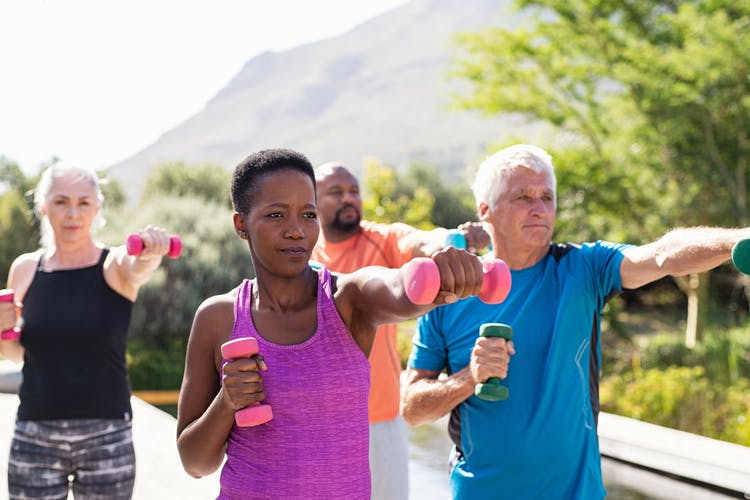Physical Activity for Stroke
Engage in Physical Activity for Stroke Prevention and Rehabilitation to Move Your Body and Strengthen Your Health
A stroke can seriously interrupt your life and is one of the world’s top causes of disability. But exercise is essential for preventing strokes as well as promoting healing following one. This blog post delves into the significance of physical activity and offers comprehensive recommendations for stroke prevention and recovery.
Table of Contents

The Power of Movement: The Significance of Exercise
Exercise is a potent technique for both stroke prevention and therapy. This is how it helps you:
- Decreased risk factors: Being physically active on a regular basis lowers blood pressure, cholesterol, and weight—all of which are important factors in lowering the risk of stroke.
- Better circulation: Exercise improves blood flow to all parts of the body, including the brain, which helps the body carry essential nutrients and oxygen.
- Enhanced balance and coordination: More cardiac muscle means a stronger heart, which pumps blood more effectively and puts less stress on the circulatory system.
- Improved balance and coordination: Getting regular exercise helps enhance balance and coordination, which lowers the risk of falls, which is a major worry following a stroke.
- Enhanced muscular strength: Strength training aids in the restoration of muscle loss following a stroke, enhancing mobility and self-sufficiency in everyday tasks.
- Benefits to cognition: Exercise enhances memory, reasoning abilities, and cognitive function while boosting general wellbeing.
Guidelines for Physical Activity in the Prevention of Strokes
Physical Activity for Stroke
The following actions are advised by the American Heart Association (AHA) to avoid strokes:
- Aerobic activity: Aim for at least 150 minutes per week of moderate-intensity aerobic activity (such as brisk walking or swimming) or 75 minutes per week of vigorous-intensity aerobic activity (such as cycling or running).
- Strength training: Perform moderate-intense strength training exercises on two or more non-consecutive days each week, targeting all major muscle groups.
Physical Activity for Stroke
These are simply suggestions; you can modify them in accordance with your current level of fitness and any restrictions. It’s important to speak with your doctor before beginning a new fitness regimen, particularly if you have any stroke risk factors.
Guidelines for Physical Activity in the Rehabilitation of Strokes
Physical Activity for Stroke
After a stroke, exercise becomes a crucial component of your recovery process. Here’s something to think about:
- Start out slowly and lengthen the duration and intensity gradually: Start with low-impact activities while being supervised by a physical therapist. As your strength and coordination develop, gradually raise the difficulty.
- Concentrate on particular objectives: Whether you need help with balance, arm mobility, or walking, your physical therapist will create a program specifically tailored to your needs.
- Exercise types: A typical stroke rehabilitation program consists of a mix of stretching, cardio, strength, and balance activities.
- Safety comes first: Working with a licensed physical therapist is essential to guaranteeing secure and efficient training regimens.
- Maintaining consistency is essential: To maximize development, you must regularly engage in your rehabilitation program.
Ways to Develop a Habit of Physical Activity
Physical Activity for Stroke
It takes commitment to incorporate exercise into your life, whether it is for preventative or post-stroke recovery. Here are some pointers:
- Locate things you enjoy doing: Investigate various forms of exercise, such as yoga, dance, swimming, or walking.
- Commence small and recognize accomplishments: To maintain motivation, concentrate on attainable objectives and acknowledge even minor advancements.
- Locate an exercise partner: Engaging in physical exercise alongside friends or family can enhance the fun factor and promote responsibility.
- Make it easy to access: Plan your workouts into your everyday schedule and look for opportunities to move throughout the day.
Physical Activity for Stroke
Pay attention to your body and avoid overexerting yourself. As needed, take a nap and stay out of pain.
You can greatly lower your risk of stroke and enhance your general health by engaging in physical activity. A focused physical rehabilitation program can help you restore function after a stroke and enhance your quality of life. Never forget that you can always start taking charge of your health and getting active.


